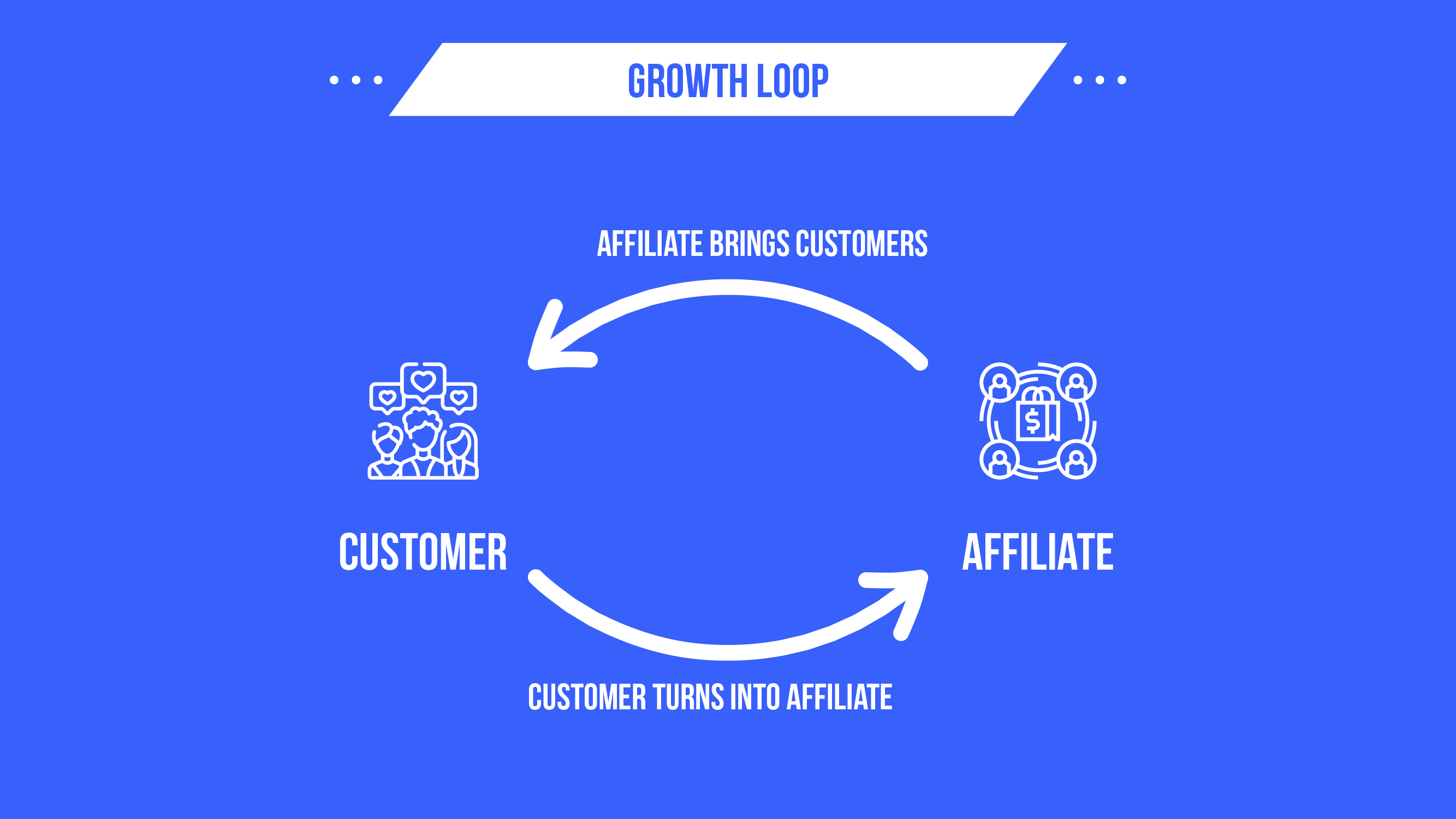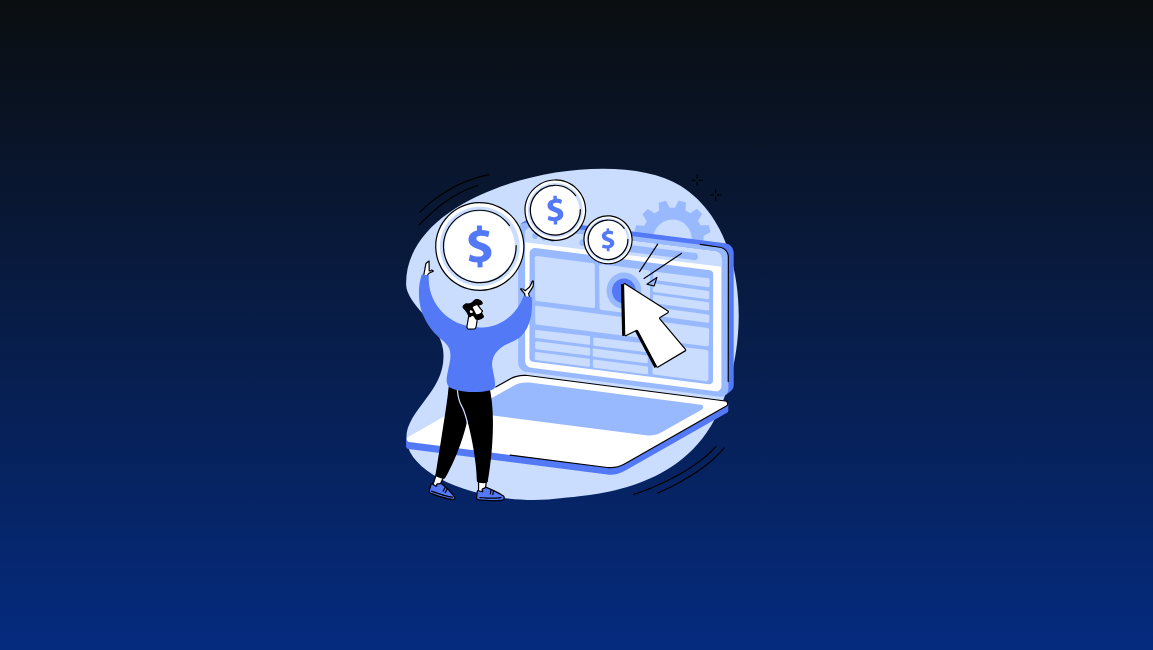Back in 2007, Dave McClure came up with the AARRR framework.
It’s a top-down funnel you might have seen a zillion times — one that depicts customer lifecycle in 5 steps: Acquisition > Activation > Retention > Referral > Revenue.
MANY e-commerce businesses today map out their marketing based on the AARRR model. But there’s one problem with the framework: It’s a top-down funnel where the more you pour in, the more you get out of it. The growth is always linear (X input > Y output, 2X > 2Y, 3X > 3Y,…).
In the real world, almost all successful businesses grow exponentially.
So what’s missing? The AARRR framework is a narrow view of how things work. The best marketers do not think of customer lifecycle in terms of funnels. Rather, as brilliantly put by Reforge, they look at it as loops (precisely, growth loops).
What’s a growth loop? Well, that’s what you’ll learn in this article. You’ll also discover the types of growth loops and how you can create them to grow your e-commerce business exponentially (like the best in the world).
Let’s start!
What’s a Growth Loop?
A growth loop is a closed system that takes an input, processes it, and generates an output that can be reinvested in input.
The traditional AARRR model stops at the output. Loops help you strategize how to reinvest the output of one cycle as an input of the next cycle…and hence bring compounded results.

Let’s take an example of an e-commerce store with an affiliate program to understand it better:
Step-1: A customer buys from the e-commerce store.
Step-2: The customer becomes an affiliate.
Step-3: As an affiliate (who’ll get incentive), the customer brings a new customer(s).
Step-4 = Step-1: The new customer buys from the store.
And, ideally, the loop continues.
Benefits Of Growth Loops
The benefits of successful growth loops are obvious:
- It brings compound growth.
- You can spend more on customer acquisition — because once the customer is in the system, the customer will fuel the growth engine and pay you back (& more) the extra you spent to leave the competition behind.
- The retention rate will be higher — because a) when you think of growth loops, you think of having LOYAL customers who’ll share/promote/interact with your brand, and b) there are specific growth loops to retain customers, as you’ll discover in the next section.
Types of Growth Loops (With Examples)
You can categorize growth loops in many ways: Acquisition growth loops & Retention growth loops; Organic growth loops & Inorganic growth loops; etc.
But let me list the commonly-used growth loop types to simplify:
- Personal growth loops: People share about some products because there’s a personal incentive. For example, people ask their friends to install multi-player games to play together.
- Financial growth loops: People share links to products/sell products because there’s a financial incentive. For example, Paypal gave users $10 for every friend they brought on the platform. It helped them grow to 100 million — no bad!
- Social growth loops: Some products are so good that people simply promote them in social circles. For example, GoPro users tag them on photos taken on GoPro, use their hashtag, and spread word of mouth.
- Digital content loops: People read brands’ content online and share it. For example, you might share this article with your e-com friends and make them aware of Social Snowball.
- Physical content loops: Some products are so attractive that people ask about them or notice them. For example, people search for GAP hoodies after seeing someone wear one (and the GAP logo’s right there!).
- Embedded growth loops: Many brands grow by embedding their brand elements on users. Let’s retake the previous example — GAP’s logo is clearly visible on their hoodies, so people search for them and buy from them.
- Internal growth loops: Internal loops are used to retain the customer/make them spend more. For example, YouTube’s recommendation engine ensures people discover what they’d like to see. As a result, people never leave the platform.
- Paid loops: Paid loops are the ones where input is money (spent on ads, marketing, etc.), and typical output is more money (from acquired customers) that can be used as input. For example, you can spend $100 on Facebook ads, generate $200 profit, and spend it again on Facebook ads.
You can use any of these loops, all of these loops, or superimpose multiple of them to grow your business.
Here Are a Few Ways To Create Growth Loops For eCommerce Businesses:
1. Have an affiliate/referral program
Affiliate marketing is a word-of-mouth marketing initiative designed to incentivize happy customers to introduce your products to their friends, family, and social contacts. Some of the most successful businesses out there grew on the back of affiliate/referral marketing.
Here’s how you can create a growth loop with affiliate marketing:
- New customers buy from you.
- They sign up for your affiliate program. [If you are on Shopify, you might want to create your affiliate program on Social Snowball. We automatically sign up all your customers to the program and motivate them to share your products with their friends and family]
- They bring new customers for the incentives (typically 10-20% of revenue)
- The new customer becomes an affiliate.
Related read: Affiliate marketing best practices
2. Sell great products
For an affiliate program or almost any growth loop to work, your product must be on par with customers’ expectations. However, this point’s not about that.
Selling good products is in and itself a tremendous social growth loop. It leads to brand loyalty and word of mouth. And if it’s something unique and exciting (like fidget spinners were in 2017), it leads to virality.
Side Note: Check out our video with Cooper Weiss – the guy who made fidget spinners viral.
3. Encourage user-generated content
User-generated content (or UGC) is any type of content — text, image, video, GIF — created by actual users rather than the brand or influencers. It creates a social growth loop + digital content loop.
Here’s how a UGC-based growth loop looks like:
- People buy from your store.
- They share about your products, tag your page on Insta when using it, use your hashtag, etc.
- New people discover your brand and buy from you.
The difficult part about UGC is people don’t just promote anything unless it’s exceptional. Therefore, you need to find ways to get people to do it. Here are a few tips:
- Host giveaways.
- Reshare the best UGC on your profile. [You can use a Shopify app like Okendo to gather UGC]
- Send unexpected freebies with orders.
- Send freebies to micro-influencers.
- Give a personalized experience.
- Publish content they’d want to share.
- Try gamification marketing.
You can read about all the points in detail in our word-of-mouth marketing strategies article.
4. Strengthen your recommendation engine
If you don’t have an internal growth loop, you’ll be busy chasing new customers.
For most e-commerce stores, a good recommendation engine results in a better customer experience, more sales, and more engagement.
Here’s a fantastic article by the good if you’re stuck with “how can we better product recommendations for our customers?”
Additionally, you can do email marketing, SMS marketing, retargeting, and more to retain customers.
5. Paid marketing
The last tip is to invest in paid growth loops eternally. Invest in advertising, marketing, and branding to attract new customers and retain old ones. Then, use the money customers spend on the products to keep the growth engine running.
All in all
Growth loops feed themselves and hence bring exponential growth.
The traditional funnels don’t. There, X amount of input produces Y amount of output — that means, the more the input from your side, the more the output. As a consequence, the growth graph is always linear.
What are your thoughts? Which growth loop caught your attention? Let us know in the comments below.
Start Your 14-day Free Trial with Social Snowball – a Shopify Affiliate App




